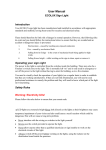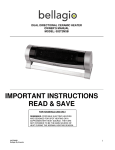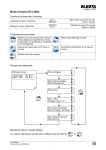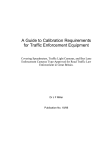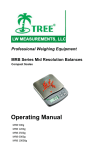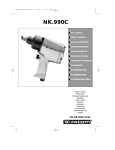Download User Manual - Portland Lighting
Transcript
User Manual Edward and Victoria Lanterns Introduction Your Lantern has been manufactured in accordance with appropriate standards and methods, having been tested for security and electrical safety. There should therefore be little risk of danger in normal operation. However, the following risks do exist and you should follow the instructions below to ensure that they are avoided and an accident or dangerous injury is prevented. 1. Electrocution – caused by touching any exposed conductors 2. Fire – caused by an electrical fault 3. Falling from its fixings – in the event of mechanical loads being applied or high winds 4. Falling from a height – whilst working on the sign to clean, repair or remove it. Operating your Lantern The power to the light is controlled from the switches inside the building. There may also be a Fireman’s switch close to the light. This is normally left “on” and is only used in emergency to cut off the power to the light without having to enter the building, as in a fire situation. You need to visually check the operation of your light(s) on a regular basis in order to establish that they are working satisfactorily. If they are not fully illuminated, you will need to seek professional assistance to remedy the problem and they will need to know which part of the light isn’t functioning. Safety Rules Warning: Electricity kills! Please follow the rules below to ensure that you remain safe:. Never interfere with the wiring or switches to the light yourself. Always use the switch provided to operate the light. Never allow anyone other than a qualified electrician to work on the electrical circuits of this light. Always switch off the power before working on the lights, using the isolator on the distribution board inside the premises. Switch the light off if there is any reason to think that it is faulty – e.g. sparks or flames visible, smoke being emitted, etc. Never allow any objects to be attached to or placed on the light. Always visually check the light after any high winds to see if it might have been loosened from its fixings Never allow anyone to attempt to work on the light that is not trained and competent in the use of ladders, tower scaffold or other access equipment. In the event of vandalism, switch off the power to the light until it has been examined by a competent person. Maintenance and Aftercare of Lighting We strongly advise that you only ever use or permit someone to attempt to clean, repair, modify or remove the light that can furnish evidence of their competence to do this work, including working at height. If you decide to maintain the light yourself, please follow these instructions: 1. To Remove Dust, Dirt & Stains switch off the light before cleaning begins - make sure the light is electrically isolated. wipe the outside of the lights with a chamois window leather which has been moistened with soapy water only, e.g. mild washing up liquid, do not use bleach. switch the light back on. 2. Faulty Illumination Do not attempt to dismantle the light. Call in a recognised electrician who will know how to repair the light. To avoid failures in illumination a recognised electrician should be employed to undertake preventative maintenance. A visit should take place after 3000 hours of illumination when the lamp should be replaced. Work at height Falls from height are a major concern as they often result in serious injury or death. The Work at Height regulations of 2005 apply to all working at height, including work on lights installed at a height on your premises. For this reason it is always necessary to ensure that anyone working at a height to repair, clean or remove your lights are trained and properly equipped to do so safely. Environmental There are a number of environmental issues of which you should be aware: Power consumption Whilst lights consume relatively small amounts of power, it is possible to save some power by only switching on the signs when they are needed and avoid running them continuously. Disposal Always dispose of light components in accordance with current environmental requirements. Wherever possible, dispose of lights in such a way as their constituent parts may be recovered for further use. When disposing of the light, it is recommended that you employ a qualified electrician to remove and dispose of the light in accordance with current environmental requirements. Please note: . You are not allowed to dispose of Halogen Lamps in the general waste bins – they must be separately sent to an approved waste disposal site and this can only be done by a company authorised to dispose of this waste. Disposal of other electrical components, such as transformers, must be handled in view of the WEEE Regulations 2006 which require that electrical waste is separately sent for recycling or recovery. Disposal of the polycarbonate glazing box may be done through the general waste route Aluminium and steel are best disposed of through a scrap dealership so that they may be re-used. Information provided by: Portland Lighting Ltd Units A2 & A3 Walsall Enterprise Park Regal Drive Walsall WS2 9HQ www.portlandlighting.co.uk email [email protected] Tel: 01922 721133



